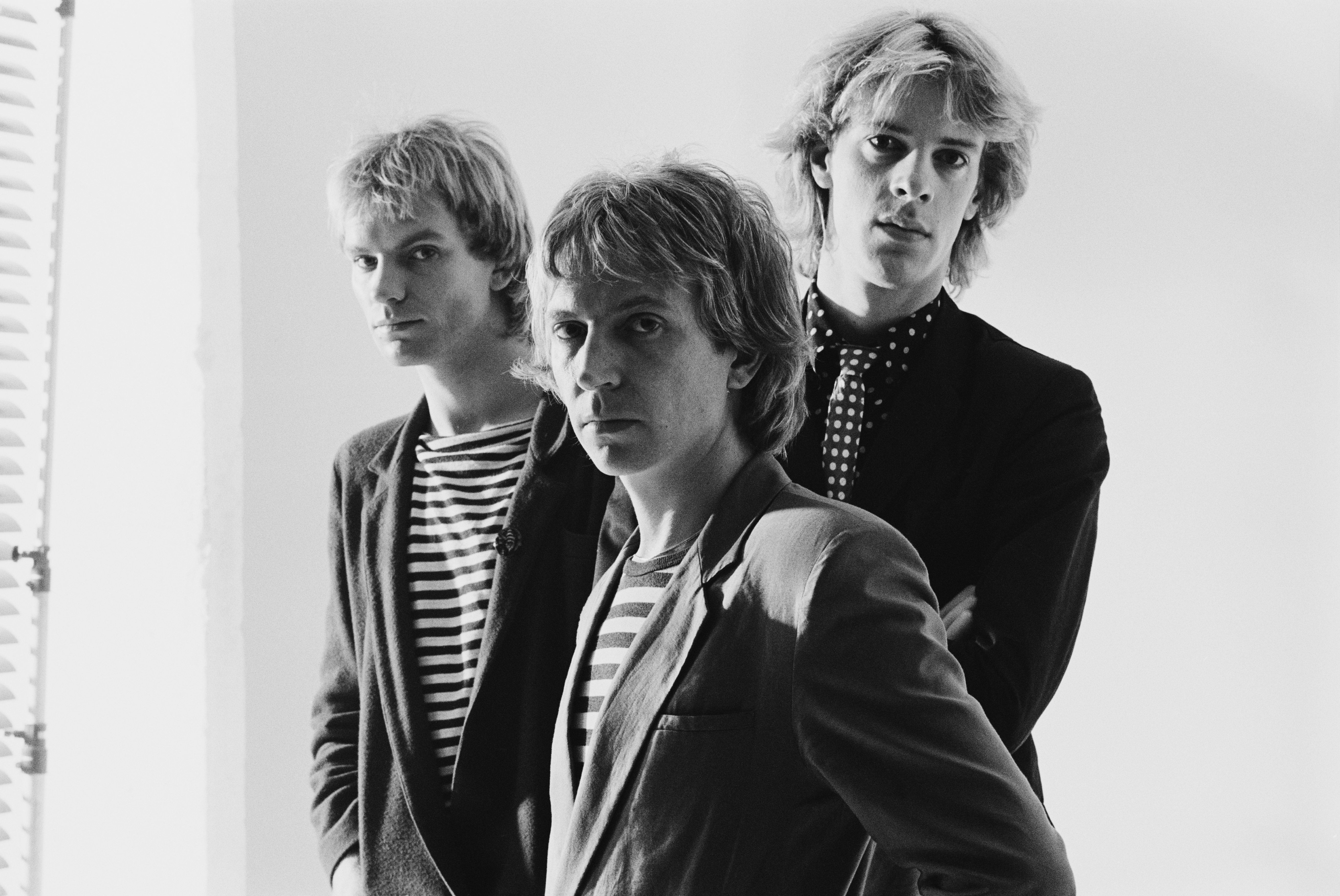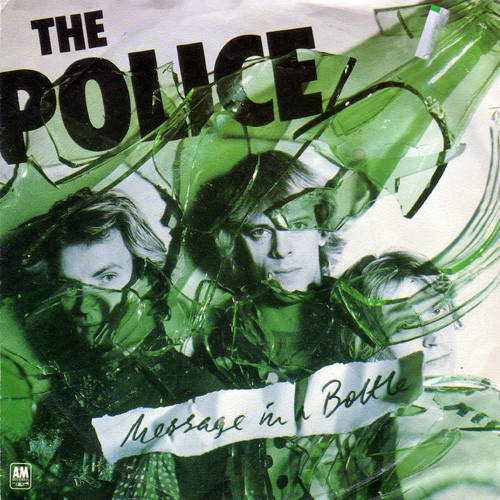"It's the best song Sting ever came up with, and the best Police track." How Andy Summers made a massive hit using a hand-wrenching guitar figure and a Telecaster with a mysterious history
The guitarist says “It’s a famous riff, and I have to admit, it’s hard to play. You have to be a real guitarist to do it well."

“For me it’s the best of the Police,” guitarist Andy Summers says. “There are a lot of other great tracks, but I’ve always particularly liked that one.”
That one is “Message in a Bottle,” the lead track from 1979’s Reggatta de Blanc, the sophomore album from the Police. It’s hard to argue with Summers’ assessment. Beyond its chart success — it was the group’s first number one hit in the U.K. Singles Chart — “Message in a Bottle” shows Summers, bassist Sting and drummer Stewart Copeland performing at the top of their game on a song that gives each equal room to display their impressive chops. That’s especially true for Summers, whose massive, ear-catching guitar riff captivates from the moment the song begins.
“It’s a famous riff, and I have to admit, it’s hard to play,” he told Guitar Player in 2019. “People want to play it, but a lot of them can’t — the stretches are too big. You have to be a real guitarist to do it well."
While most young signed artists sweat out the dreaded sophomore slump, there were no concerns for the Police when they set out to make Reggatta de Blanc. Their debut, 1978’s Outlandos d’Amour, had been a smash thanks to the hit singles “Roxanne” and “Can’t Stand Losing You.” But as Summers reveals, Sting had an impressive backlog of material he’d been compiling for years since before the Police formed.
“He had this giant book — a big, thick, hardbound book — with pages that had lyrics all the way through it,” Summers told Classic Rock in 2017. “So we never really ran out of material.”
“Message in a Bottle” was among those unfinished works, but it existed in a much different form before the Police settled into London’s Surrey Sound Studios with producer Nigel Gray to make Reggatta de Blanc. "Sting had that riff for a while, but there was another tune with it originally,” Summers told L'Historia Bandidio in 1981. “He'd been fiddling about with it during our first American tour. Finally, he rearranged the riff slightly and came up with the song."
Naturally, Summers would put his own spin on it.
All the latest guitar news, interviews, lessons, reviews, deals and more, direct to your inbox!
“Sting showed me the riff he had, but I embellished it,” the guitarist told Guitar Player. “I had the chops to make it swing and rock. I could tell right away it had something, and I was thrilled to play something that started to progress our style.”

Much as he would with the Police’s 1983 hit “Every Breath You Take,” Summers relied heavily on arpeggiating the notes of the chords Sting provided. “Rather than just strumming chords — C# minor, A, B, F# minor — I was outlining the figures in a way that integrated very well with Stewart’s hi-hat,” he told GP. “I should say that the recorded version of this song is the best drum track Stewart ever did.
“In the studio, we added a second guitar part, so there’s a harmony going on there. Then it goes into a more of a rock chorus, but the verse is the classic Police sound, again outlining the chord, which is tonic, fifth and added ninth.”
And it’s that “classic Police sound” that made the song so instantly identifiable to the young group’s growing audience. But as Summers explains, it was the result of a concerted effort by the trio.
“Really, the process was about: how could we take some of this basically raw material and ‘Police-ify’ it — make it sound like the way we sounded,” he told Classic Rock. “Which was of course the unique chemistry between the guitar, the bass line, the high vocals that Sting had then and Stewart’s unique drumming. Never to be repeated.”
Of course Summers’ guitar tone plays a huge role in the song's instant recognition factor. While many assume Summers relied on a chorus pedal for the song, or possibly his Roland JC-120 Jazz Chorus amp, he in fact used the Electro-Harmonix Electric Mistress Flanger/Filter effect pedal for the majority of Regatta de Blanc and its follow-up, Zenyatta Mondatta. (He’d previously employed an MXR Phase 90 on Outlandos d'Amour.) The Electric Mistress setting is certainly more chorus the flange on “Message in a Bottle,” but for those looking to cop Summers’ tone, it's the pedal of choice.

Of course, much of the basic tone is down to Summer’s modified early 1960s Fender Telecaster. He used it to record many of the group’s best-known tracks, including "Roxanne," "Don't Stand So Close to Me," "Every Little Thing She Does Is Magic,” "Spirits in the Material World" and "Every Breath You Take.” As Summers has explained, the Telecaster is modified with a Gibson PAF humbucker in the neck position and a Tele single-coil in the bridge position that's mounted directly to the body rather than the bridge plate. The guitar's stock bridge was swapped out for a brass plate with individual string saddles, while the electronics include a built-in preamp controlled with a toggle switch, and a second toggle for changing the pickup phase.
As for where the Telecaster came from, its history is somewhat muddled. Summers told Vic Garbarini in Guitar World’s December 1997 issue it was originally owned by Eric Clapton, whom Summers knew from performing on London’s 1960s music scene. He said Clapton, then recording his debut album with Cream, was using the Telecaster since his own Les Paul — the one he'd famously used on the Bluesbreakers with Eric Clapton album — had been recently stolen. Summers claimed the two guitarists made a trade. “I brought it to this session he was doing, and he immediately started using it,” he told Garbarini. “That turned out to be the Fresh Cream album. So then I wound up with the Telecaster, which I played all through the Police and still use today.”
Since then, another version of the story has emerged in which Summers purchased the already modified guitar from one of his guitar students in the early 1970s while he was studying classical guitar and composition at Calfornia State University. Most recently, in 2023, he told Rick Beato he sold Clapton his Les Paul for £200 and made no mention of the Tele being part of the deal.
Regardless of how he came to own the guitar or when the modifications were made, the Telecaster's preamp and the out-of-phase switch helped Summers achieve the bright and crisp rhythms tones that became his hallmark. As he told Garbarini, the Telecaster was used “almost exclusively onstage and in the studio pretty much up until the Ghost in the Machine album.”
Once the basic tracks for “Message in a Bottle” were sorted out, Summers told Guitar Player he was faced with a decision that was difficult for the band in those waning days of the punk scene: whether or not to add a guitar solo.
“We were coming out of a sort of religious punk scene, and guitar solos at that time were supposed to be a mark of the old guard,” he explained. “Stewart was vehement about that, but I was a great soloist, so of course I was soloing my ass off.
“We were always in a weird position with that,” he adds. “As I started playing a solo over the end of the song, Sting went, ‘Oh, actually, this is really good. Keep it in, keep it in.’ It wasn’t up really loud, which I would’ve liked, but it was in there, with a lot of feeling.”

By the time the track was finished, the Police knew they had another hit on their hands. They didn’t have to fight with their label over it either. “Two A&R guys came down from A&M Records, sat down on the couch," Summers told Classic Rock. "We put that song on, and they were just smiling as widely as they could, because it was a killer track."
While the single reached only number 74 on the U.S. Billboard Hot 100, “Message in a Bottle” nevertheless solidified the group’s American fanbase, something they would fully exploit when they launched their first U.S. number one, “Every Breath You Take.” But from the beginning it was a massive concert favorite, and Summers has used the stage as an opportunity to develop his famous riff further.
“I’ve played it a lot of different ways, in a lot of different positions, over the years, just trying to do stuff with it,” he told Guitar Player. “Sometimes playing the second chord, the A, with the open A string, rather than going to the obvious sort of shape of the added-ninth chord. It’s pretty cool.”
Forty-five years on, the song remains his personal favorite from the Police’s short reign. "For me, it's still the best song Sting ever came up with,” Summers wrote in his book One Train Later, “and the best Police track.”
Christopher Scapelliti is editor-in-chief of GuitarPlayer.com and the former editor of Guitar Player, the world’s longest-running guitar magazine, founded in 1967. In his extensive career, he has authored in-depth interviews with such guitarists as Pete Townshend, Slash, Billy Corgan, Jack White, Elvis Costello and Todd Rundgren, and audio professionals including Beatles engineers Geoff Emerick and Ken Scott. He is the co-author of Guitar Aficionado: The Collections: The Most Famous, Rare, and Valuable Guitars in the World, a founding editor of Guitar Aficionado magazine, and a former editor with Guitar World, Guitar for the Practicing Musician and Maximum Guitar. Apart from guitars, he maintains a collection of more than 30 vintage analog synthesizers.
- Joe BossoContributing Writer


